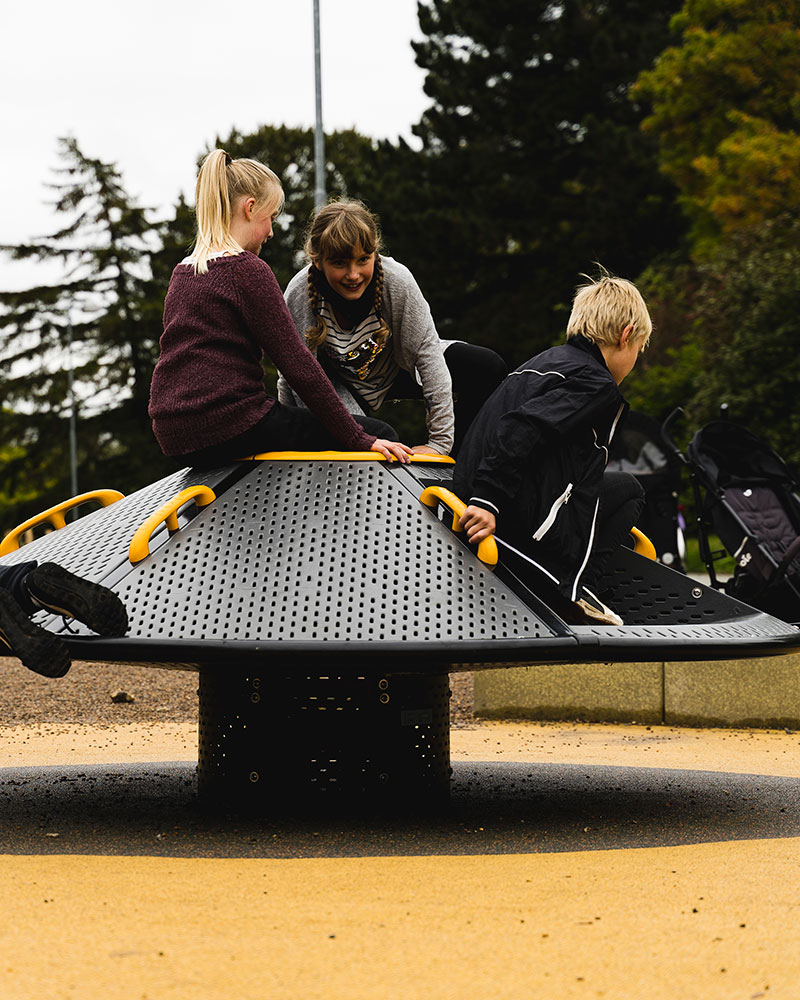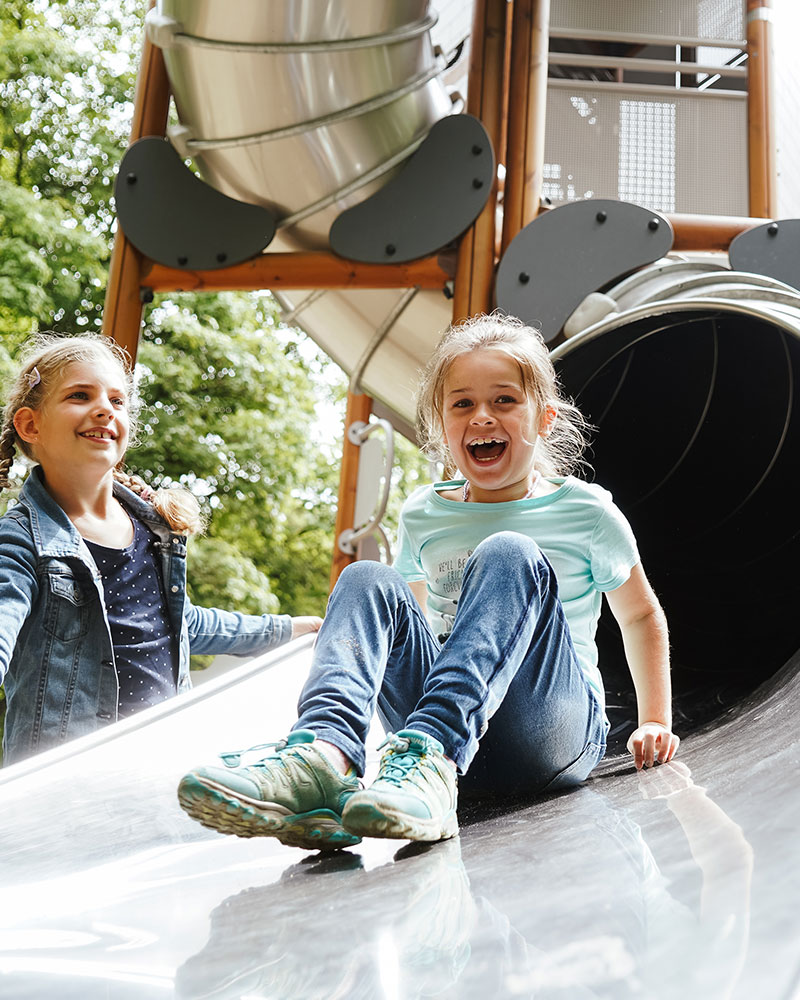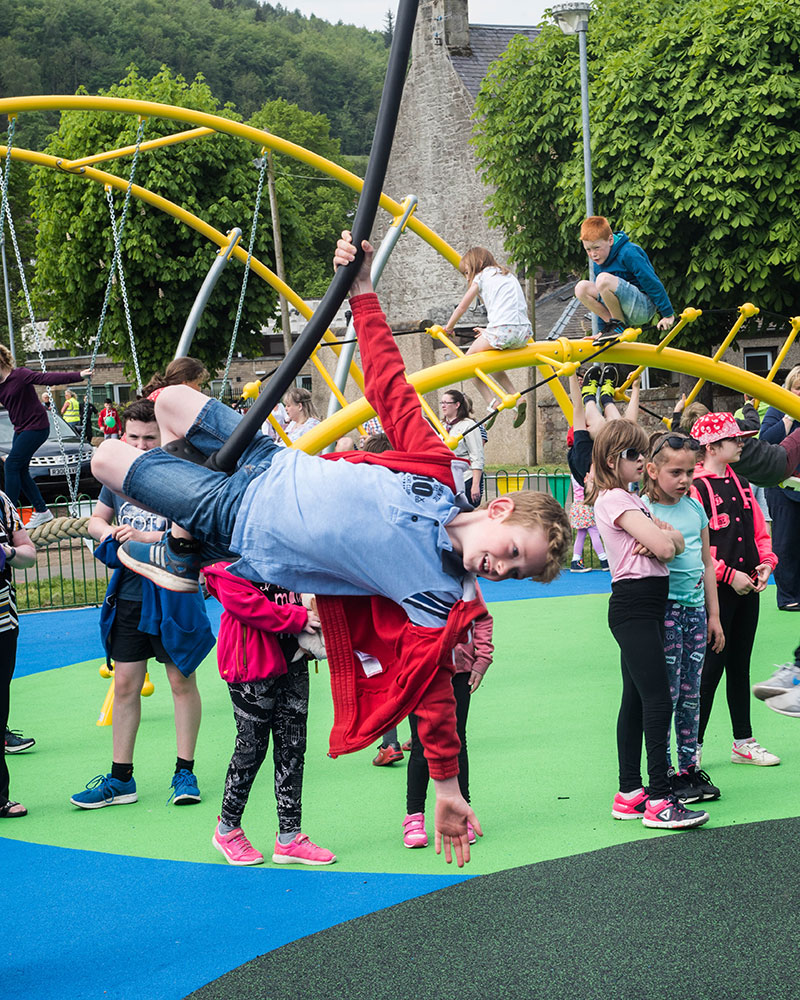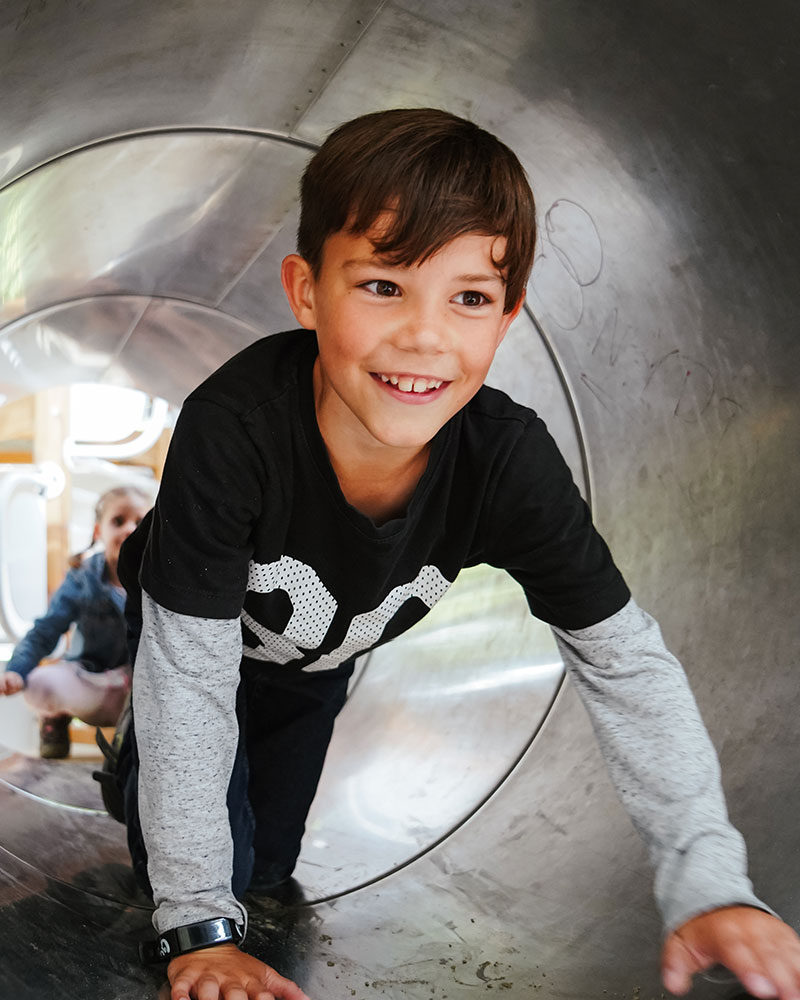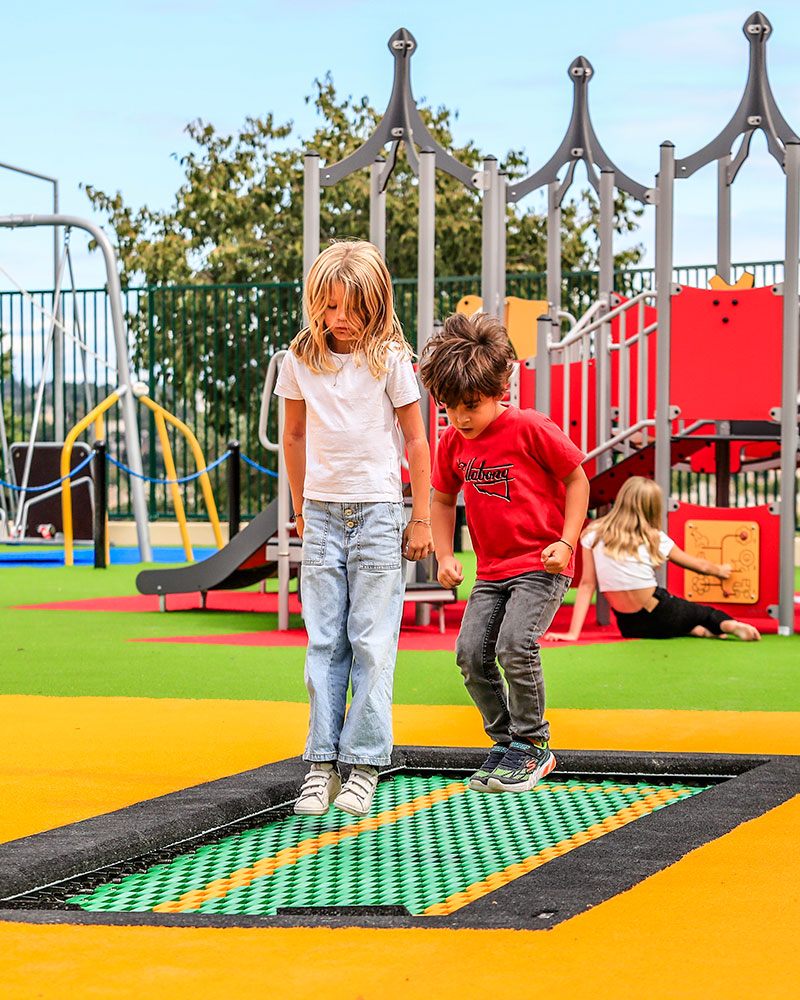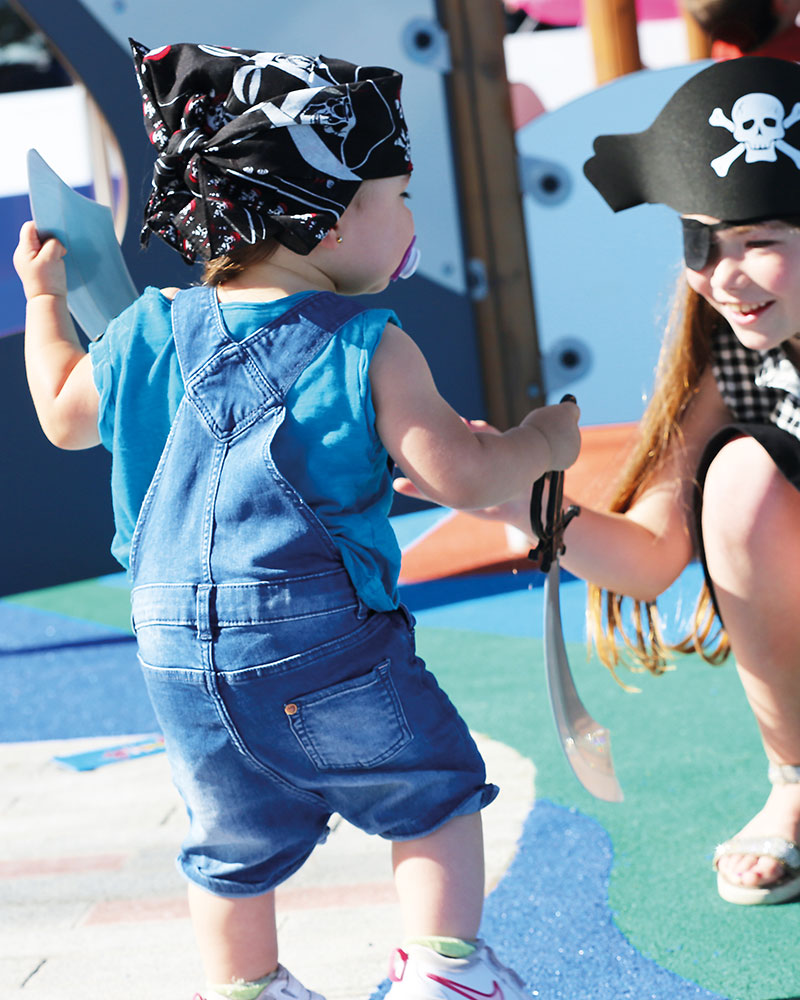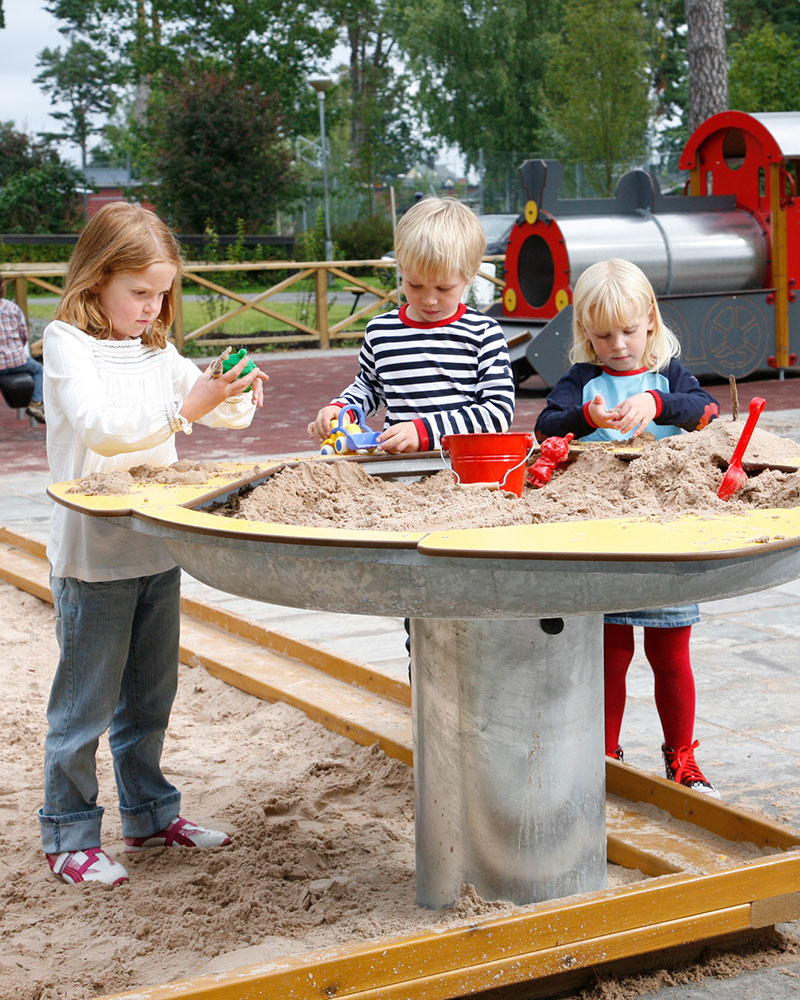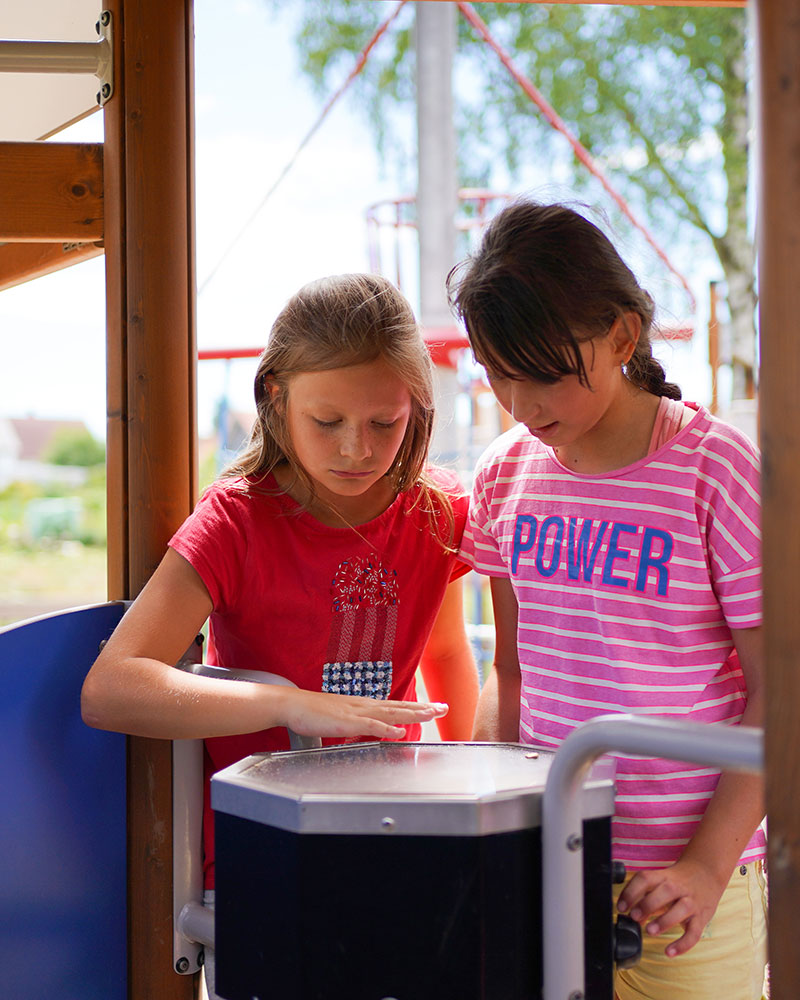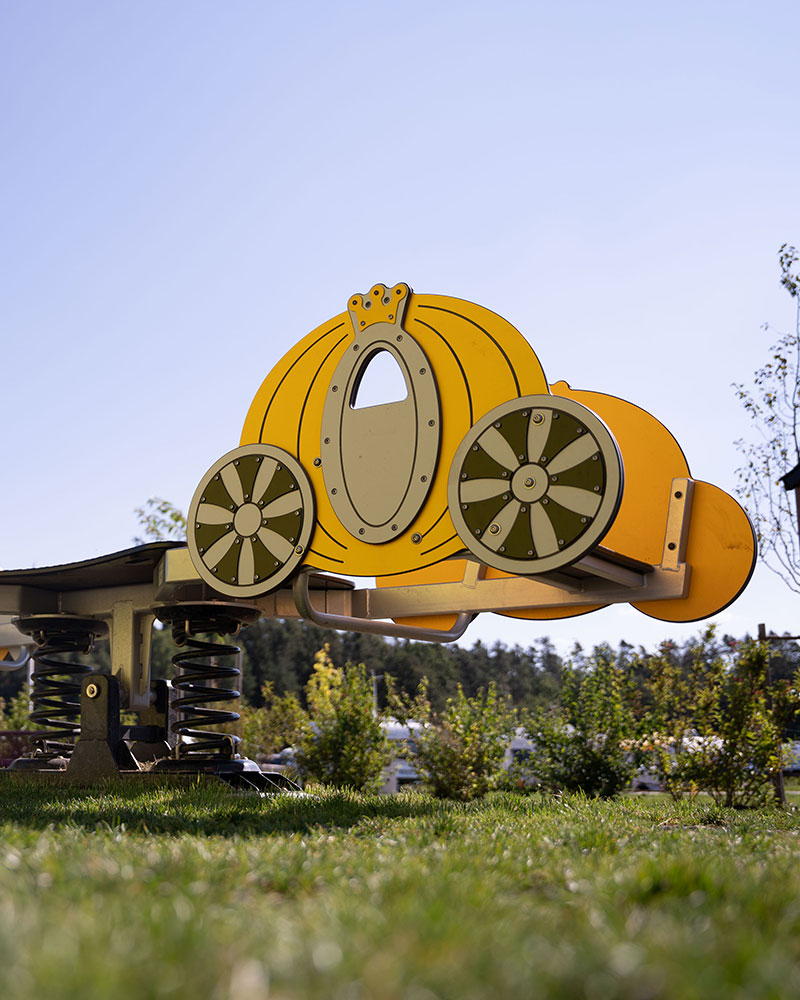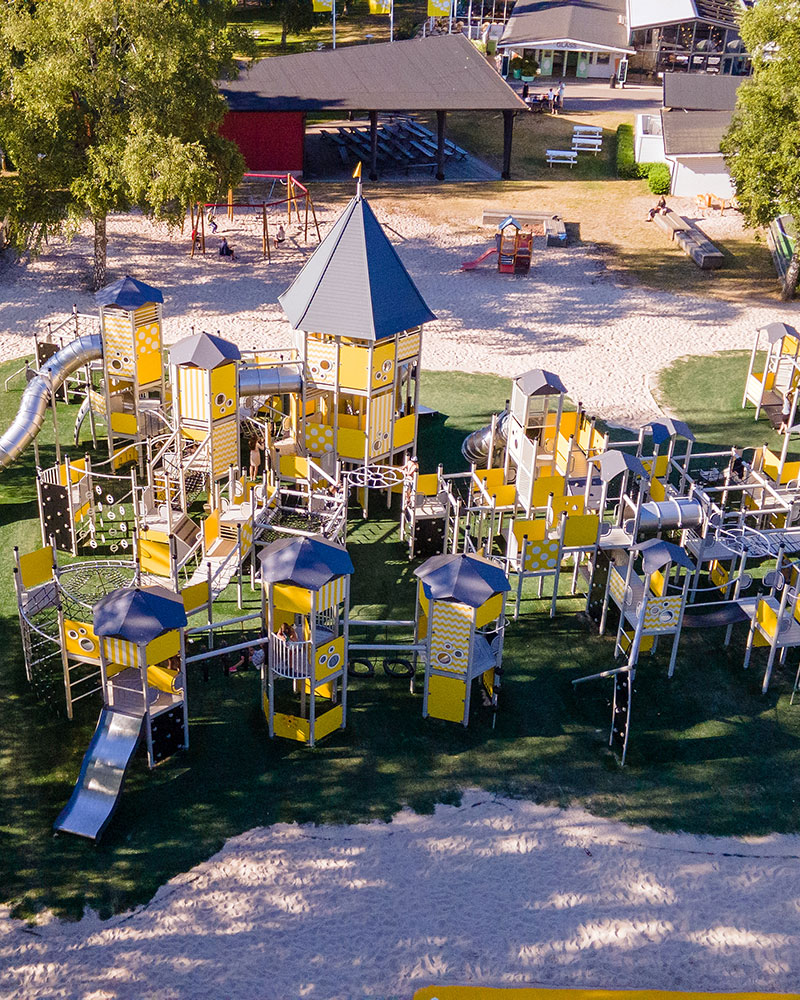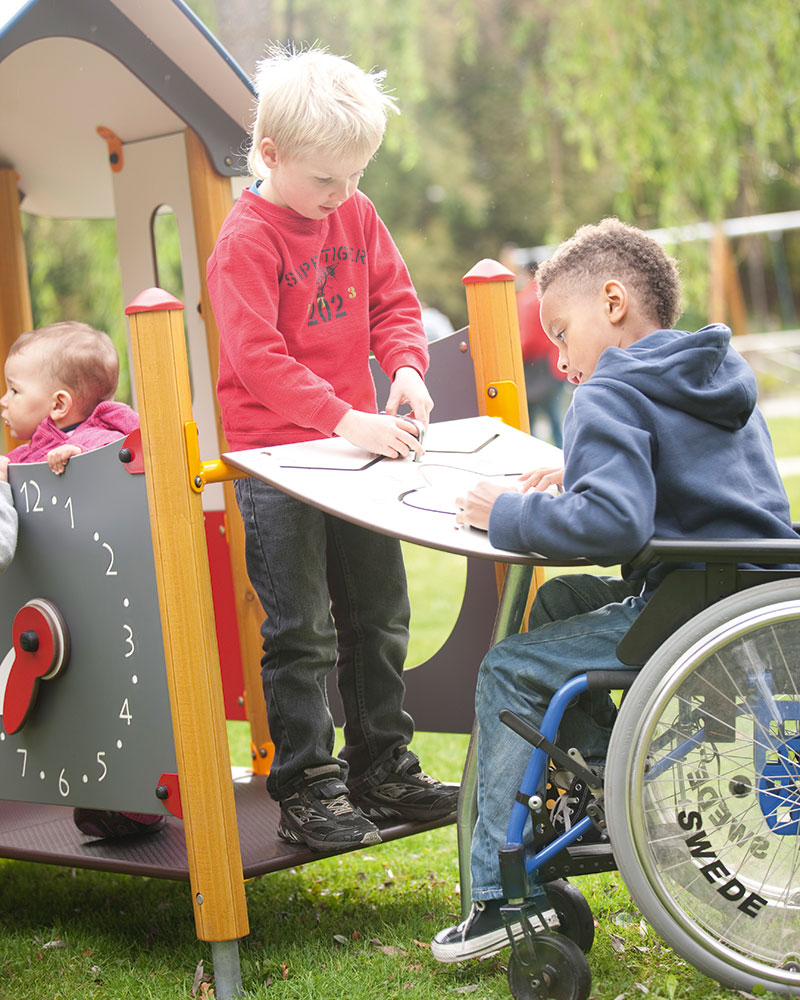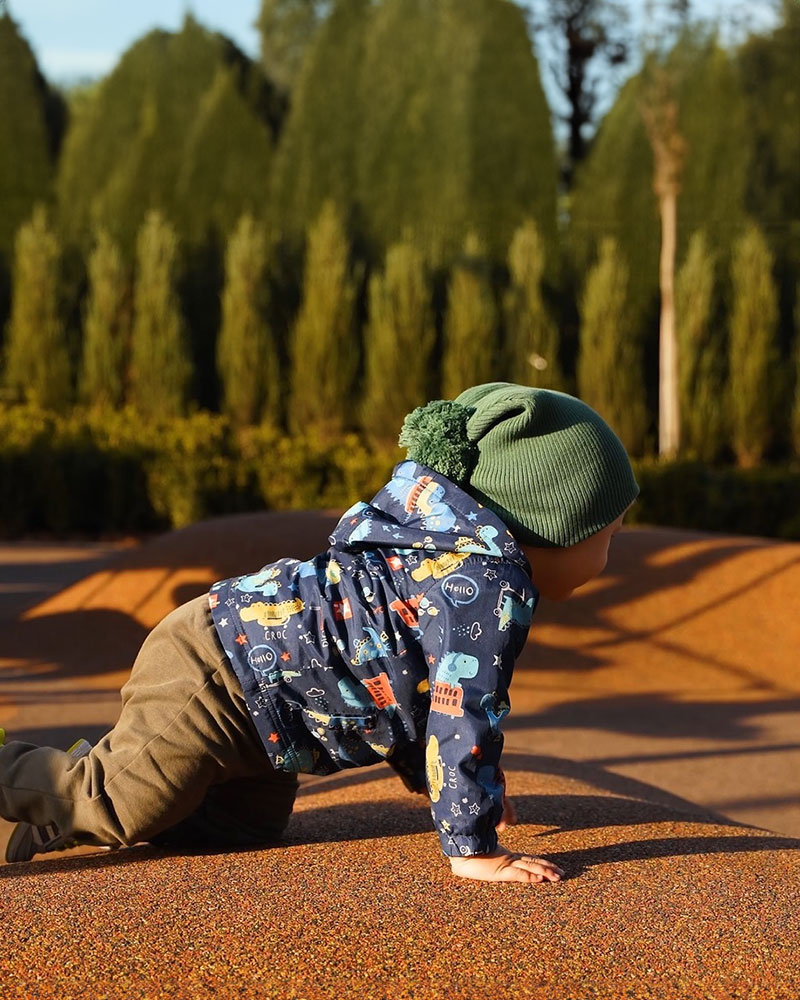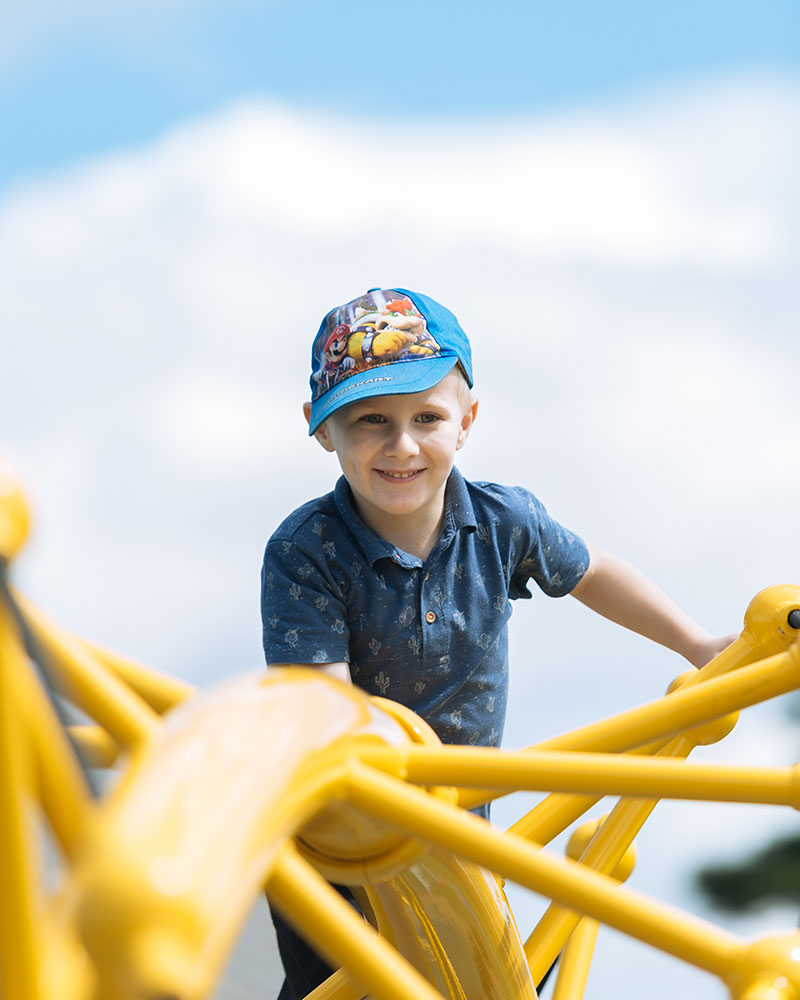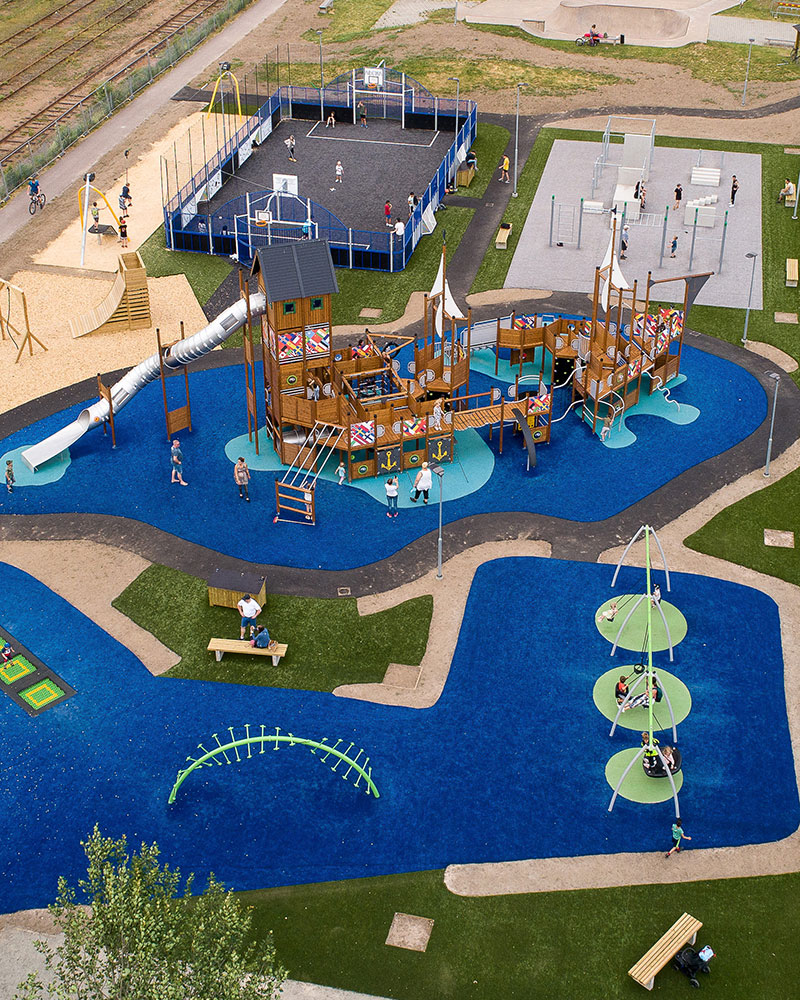How playground equipment supports play values
Inclusive playgrounds are places where children of all abilities can play and obtain a rich range of physical, sensory and social experiences. Here we explore how the quantity, quality, diversity and inter-relationships of play equipment and features support these play values and inclusive experiences.
What is play value?
Play value refers to the benefits an environment, object, or equipment provides to children's play experiences. High play value means children can engage in various activities and expand their ideas, like using a cardboard box as a den, car, or goal.
Play value is divided into three categories:
- Physical Play
- Sensory Play
- Social Play
Each type is crucial for a child's development and enjoyment. Including a mix of all three types when selecting play equipment and features creates a more exciting and inclusive play space.
Physical play experiences
Play activities such as spinning, sliding, rocking, swinging and climbing are all physical experiences.
Spinning
Spinning activities stimulate multiple brain areas, enhancing learning potential, spatial awareness, rhythm, balance, muscle control, and gross motor skills. Include equipment that allows children to sit, stand, or lie while spinning. For added challenge, offer spinning equipment with and without handholds.
Sliding
Slides offer children height, movement, and the thrill of speed, stimulating their vestibular system and balance. Provide slides of various heights and types (tube, textured, curved, straight, spiral) for different experiences. For inclusivity, ensure at least one slide doesn't create static for cochlear implant users, child has a place to sit while retrieving a wheelchair, and make the tallest slide accessible.
Rocking
Rocking offers fun movement, imaginative play, and challenges the vestibular system. Include equipment for both to-and-fro and side-to-side motions. Provide multiple rocking pieces for different positions (sitting, standing, lying), or use versatile equipment that supports multiple experiences.
Swinging
Swinging provides fun movement, encourages imaginative and social play, and develops the vestibular system. Include swings with linear and circular motions, and offer various types and sizes, such as belt swings, toddler swings, tire swings, and bird nest swings, to accommodate all abilities.
Climbing
An inclusive playground should offer risk, challenge, excitement, and diverse movement to improve motor skills like balance, coordination, strength, and dexterity. Level 1 features are low to the ground with hand holds and obvious paths for support. Level 2 includes angled equipment with multiple, obvious paths and good support. Level 3 is high and vertical, with minimal supports and requiring agility.
Crawling
Include at least two crawling activities with different challenge levels. A simple Level 1 activity could be a short tunnel on the ground or a bumpy surface. Level 2 could feature a longer tunnel on the ground or elevated with accessible routes on either side. For Level 3, consider a tunnel that changes elevations, offering opportunities to crawl between different levels.
Balancing
An inclusive playground should offer diverse activities for risk, challenge, and balance improvement. Include both single and double hand support balancing options, as well as equipment for sitting and standing, like a stool. Provide static and dynamic balancing activities, straight and curved paths, and ensure some equipment is at ground level and some elevated with accessible routes.
Jumping and bouncing
Jumping and bouncing challenge and develop the vestibular and proprioceptive systems, offering fun and the sensation of flying. Include at least one activity for sitting and another for standing, or a single piece of equipment that accommodates both.
Walking, running and rolling
Provide opportunities for children to play with friends, build endurance, increase muscle tone, and master dynamic balance. Leave space for games like tag or add a track design in the surfacing. Include running obstacle courses or mazes wide enough for wheelchairs. Consider a path that rises and falls to add fun and build strength.
Movements for wheelchair users
Enable children using wheelchairs to play equally with friends and to experience a motion that stimulates their vestibular system without leaving the chair. It’s important to try and provide a piece of equipment that moves the child and their wheelchair, it should also be a social experience where more than one person can play on it at a time.
Sensory play experiences
Inclusive playgrounds should provide children of all abilities with sensory play experiences in addition to physical activities. These sensory experiences should include tactile, auditory, and visual elements, interaction with natural features, and cozy, inviting spaces.
Provide children with enjoyable experiences that develop their sense of touch by interacting with various textures: smooth (metal poles, slides), soft (grass, fabric), hard (rocks, metal), rough (boulders, rope), grainy (sand, dirt), and uneven (bumpy slides, textured paths). Encourage full body tactile activities like rolling down hills or covering themselves in sand or water. Textured or undulating pathways also offer fun wheeled play experiences.
Assist in developing the auditory system by incorporating play features that appeal to the sense of hearing. This includes equipment like talk tubes for distant conversations, outdoor musical instruments, sound-generating buttons, areas that create sounds when entered, and surfaces that produce sounds when walked on.
Include features and equipment in the play space that are visually pleasing, surprising, and delightful to assist in developing the visual sensory system. Use play panels that invite tracing, tracking, or matching to enhance visual skills. Plan with color and aesthetics in mind, incorporating elements like contrasting colors, patterns, sculptures, flags, and paving.
Allowing children to engage with nature stimulates creative, imaginative, and social play, providing numerous health and wellbeing benefits. Playgrounds should include natural features like trees, shrubs, grasses, bark, soil, sand, water, and rocks. Planting items that attract birds, small mammals, and insects also encourages children to interact with nature. Integrating natural elements throughout the play space enhances the sensory experience.
Include at least one area in the play space where a child can relax, de-stress, or engage in social, imaginative, or role play. This area should feel enclosed yet still allow parents or carers to see the child. Examples include spaces under multi-play structures, playhouses, or tunnels with windows.
Social play experiences
A playground should give children the opportunity to take part in social play and interact with other children. In this section we will look at cooperative play, social interaction, dramatic and imaginative play.
Cooperative play and social interaction
Encourage social play by including equipment that requires multiple users, like seesaws and basketball hoops. Features like water, sand, and nature play, as well as group seating, promote interaction. Provide areas where children can observe and mimic others, fostering learning and enjoyment.
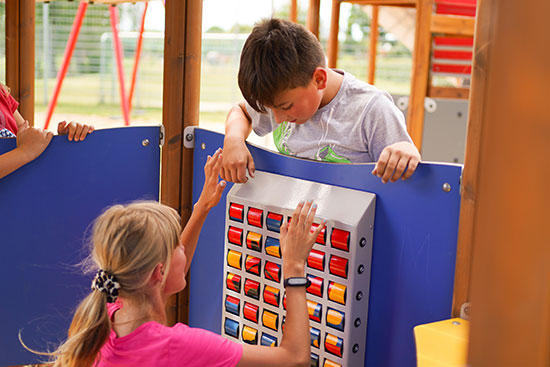
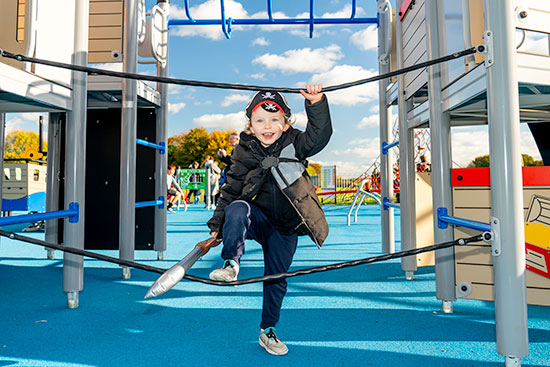
Dramatic and imaginative play
Dramatic play enhances children's language, cognitive, and social skills by allowing them to create and act out play themes with spontaneous, child-initiated, and open-ended roles. Use a mix of abstract and realistic play equipment, like themed structures, stages, and playhouses. Include props and loose parts, such as sand, twigs, building blocks, and cardboard boxes, which can be easily manipulated for creative play, fostering social, imaginative, and creative experiences.
Designing an inclusive playground
Designing for inclusion requires thoughtful integration of play values and accessibility. The following sections highlight key elements to consider when creating an inclusive play space. This guide is flexible, allowing designers to prioritize certain aspects and develop custom strategies to best meet users' needs.
Explore the pages below to help you plan and design an inclusive playground.

